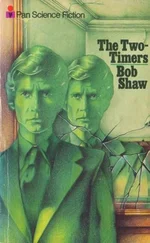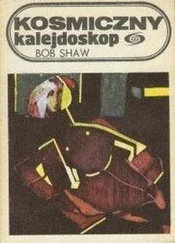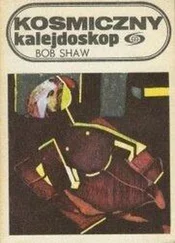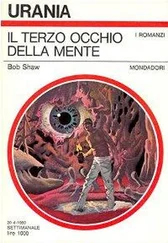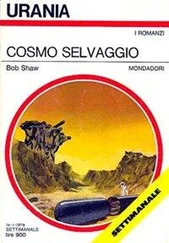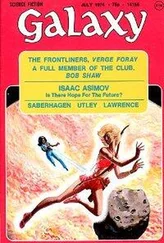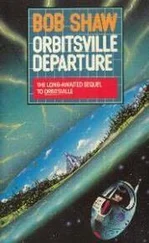Bob Shaw - The Fugitive Worlds
Здесь есть возможность читать онлайн «Bob Shaw - The Fugitive Worlds» весь текст электронной книги совершенно бесплатно (целиком полную версию без сокращений). В некоторых случаях можно слушать аудио, скачать через торрент в формате fb2 и присутствует краткое содержание. Год выпуска: 1990, ISBN: 1990, Издательство: Baen Books, Жанр: Фантастика и фэнтези, на английском языке. Описание произведения, (предисловие) а так же отзывы посетителей доступны на портале библиотеки ЛибКат.
- Название:The Fugitive Worlds
- Автор:
- Издательство:Baen Books
- Жанр:
- Год:1990
- ISBN:0-671-72029-5
- Рейтинг книги:3 / 5. Голосов: 1
-
Избранное:Добавить в избранное
- Отзывы:
-
Ваша оценка:
- 60
- 1
- 2
- 3
- 4
- 5
The Fugitive Worlds: краткое содержание, описание и аннотация
Предлагаем к чтению аннотацию, описание, краткое содержание или предисловие (зависит от того, что написал сам автор книги «The Fugitive Worlds»). Если вы не нашли необходимую информацию о книге — напишите в комментариях, мы постараемся отыскать её.
The Fugitive Worlds — читать онлайн бесплатно полную книгу (весь текст) целиком
Ниже представлен текст книги, разбитый по страницам. Система сохранения места последней прочитанной страницы, позволяет с удобством читать онлайн бесплатно книгу «The Fugitive Worlds», без необходимости каждый раз заново искать на чём Вы остановились. Поставьте закладку, и сможете в любой момент перейти на страницу, на которой закончили чтение.
Интервал:
Закладка:
“Sir?” The swaddled, anonymous bulk of Steenameert moved slightly. “Is there something wrong?”
Toller had to survey his surroundings again before he was able to identify the source of his unease. “The light! There was a change in the light! Didn’t you notice?”
“I must have had my eyes closed. But I still don’t…”
“There was a drop in brightness—I’m sure of it—and yet we have more than an hour till nightfall.” Baffled and disturbed, wishing he could have a direct view of the sun, Toller drew himself closer to the control station and looked up through the mouth of the balloon. The varnished linen of the envelope was dyed dark brown so that it would absorb heat from the sun, but it was to some extent translucent and he could see a geometrical design of panel seams and load tapes radiating from the crown, emphasizing the vastness of the flimsy dome. It was a sight he had seen many times, and on this occasion it looked exactly as it had always done. Steenameert also looked into the balloon, then lowered his gaze without comment.
“I tell you something happened,” Toller said, trying to keep any hint of uncertainty out of his voice. “Something happened. There was a change in the light… a shadow… something.”
“According to the height gauge we are somewhere close to the datum plane, sir,” Steenameert said, obviously striving to be helpful. “Perhaps we have come up directly beneath the permanent stations and have touched their shadows.”
“That is virtually impossible—there is always a certain amount of drift.” Toller frowned for a moment, coming to a decision. “Rotate the ship.”
“I … I don’t think I’m ready to handle an inversion.”
“I don’t want it turned over yet. Just make a quarter-rotation so that we can see what’s above us.” Realizing he was still holding the food bag he tossed it towards the passenger compartment on a descending curve. It fouled a safety line, swung round it and floated out over the gondola’s side, slowly tumbling as it went.
Toller pulled himself to the rail, straining to see upwards, and waited impatiently while Steenameert fired one of the tiny lateral jets on the opposite side of the gondola. At first the jet appeared to be having no effect, except that the slim acceleration struts on each side of Toller emitted faint creaks; then, after what seemed an interminable wait, the whole universe began a ponderous downwards slide. The whorled disk of Land moved out of sight beneath Toller’s feet, and above him—stealthily uncovered by the ship’s balloon—there came into view a spectacle unlike anything he had ever seen.
Half the sky was occupied by a vast circular sheet of white fire.
The sun was slipping out of sight behind the eastern edge, and at that point the brilliance was intolerable, a locus of blinding radiance which sprayed billions of prismatic needles across the rest of the circle.
There was a slight falling off in the intensity of light across the disk, but even at the side farthest from the sun it was enough to sting the eyes. To Toller the effect was akin to looking upwards from the depths of a sunlit frozen lake. He had expected to see Overland filling a large area of the heavens, but the planet was hidden behind the beautiful, inexplicable, impossible sheet of diamond-white light, through which rainbow colors raced and danced in clashing zigzag lines.
As he stood at the rail, transfixed, he became aware that the incredible spectacle was drifting down the sky at undiminished speed. He turned and saw that Steenameert was staring out past him, jaw sagging, with eyes which had become reflective white disks—miniature versions of the phenomenon which was mesmerizing him.
“A quarter turn I told you,” Toller bellowed. “Check the rotation.”
“Sorry, sir.” Steenameert stirred into action and the lateral jet mounted low down on Toller’s side of the gondola began to spew miglign gas. Rings of condensation rolled away from it through the gelid air. The sound of the jet was puny, quickly absorbed by the surrounding void, but it gradually achieved the intended effect and the skyship came to rest with its vertical axis parallel to the sea of white fire.
“What’s going on out there?” The querulous voice of Trye Kettoran issuing from the passenger compartment helped bring Toller out of his own tranced condition.
“Have a look over the side,” he called out for the commissioner’s benefit, then turned to Steenameert. “What do you think yonder thing is? Ice?”
Steenameert nodded slowly. “Ice is the only explanation I can imagine, but…”
“But where did the water come from? There is the usual supply of drinking water in the defense stations, but that amounts to no more than a few barrels…” Toller paused as a new thought struck him. “Where are the stations, anyway? We must try to locate them. Are they embedded in the… ?” His voice failed altogether as related questions geysered through his mind. How thick was the ice? How far away from the ship was it? How wide was the enormous circular sheet?
How wide is the circle?
The last question suddenly reverberated in his consciousness, excluding all others. Until that instant Toller had been overawed by the brilliant spectacle confronting him, but it had inspired no sense of danger. There had been a feeling of wonder—but no threat. Now, however, certain facts of aerial physics were beginning to assume importance. A disturbing importance. A potentially lethal importance…
He knew that the atmosphere which enveloped the sister planets was shaped like an hourglass, the waist of which formed a narrow bridge of air through which skyships had to pass. Old experiments had established that ships had to keep near the center of the bridge—otherwise the air became so attenuated that the crews were bound to asphyxiate. Largely because of the difficulty of taking measurements in the region, there was some uncertainty about the thickness of that core of breathable air, but the best estimates were that it was no more than a hundred miles in diameter.
The enigmatic sea of sun-blazing ice was rendered featureless by its brilliance, and in the absence of spatial referents it could have been hovering “beside” the skyship at a distance of ten miles, or twenty, or forty, or… Toller could think of no way to ascertain its distance, but he could see that it spanned almost one third of the visual hemisphere, and that gave him enough information to perform an elementary calculation.
Lips moving silently, he stared at the radiant disk while he dealt with the relevant figures, and a coldness which had nothing to do with the harsh environment entered his system as he reached a conclusion. If the disk proved to be as much as sixty miles away—which it could quite easily be—then, by the immutable laws of mathematics, it was sufficiently wide to block the air bridge between Land and Overland…
“Sir?” Steenameert’s voice seemed to come from another universe. “How far would you say we are from the ice?”
“That is an excellent question,” Toller said grimly, taking the ship’s binoculars from the control station locker. He aimed them at the disk, striving to pick out detail, but could see only a shimmering field of brightness. The sun was now fully occulted, spreading its light more evenly over the vast circle, making an estimate of its distance more difficult than before. Toller turned away from the rail, knuckling round green after-images from his eyes, and examined the height gauge. Its pointer was perhaps a hair’s breadth below the zero-gravity mark.
“You can’t rely much on those devices, sir,” Steenameert commented, unable to resist showing off his knowledge. “They are calibrated in a workshop, with no allowance for the effect of low temperatures on the springs, and—”
Читать дальшеИнтервал:
Закладка:
Похожие книги на «The Fugitive Worlds»
Представляем Вашему вниманию похожие книги на «The Fugitive Worlds» списком для выбора. Мы отобрали схожую по названию и смыслу литературу в надежде предоставить читателям больше вариантов отыскать новые, интересные, ещё непрочитанные произведения.
Обсуждение, отзывы о книге «The Fugitive Worlds» и просто собственные мнения читателей. Оставьте ваши комментарии, напишите, что Вы думаете о произведении, его смысле или главных героях. Укажите что конкретно понравилось, а что нет, и почему Вы так считаете.



